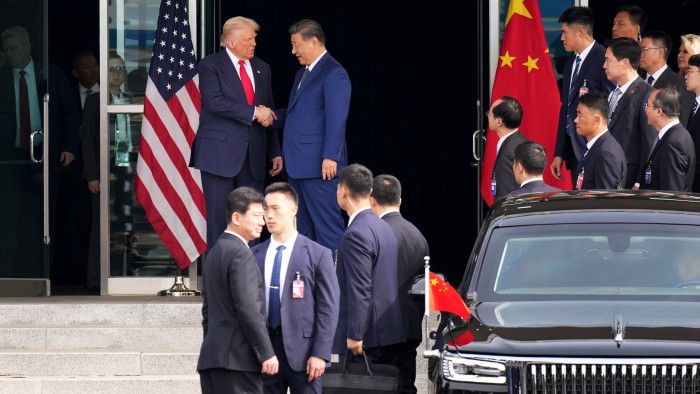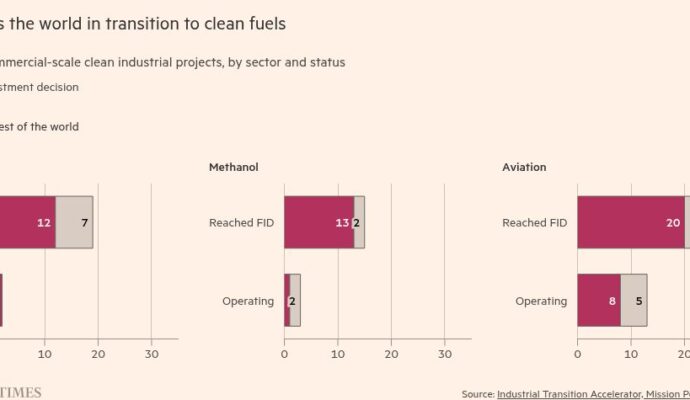
Unlock the White House Watch newsletter for free
Your guide to what Trump’s second term means for Washington, business and the world
Never one to undersell anything, President Donald Trump claimed that on a 0-10 scale his trade talks on Thursday with his Chinese counterpart Xi Jinping were a “12”. Beijing’s account was cagier, but did not dispute any specific details. What is clear is that the first meeting of the two men for six years resulted in a verbal truce that averts, for now, an escalation in the trade war between the world’s two economic superpowers. Some relief is merited. Yet trading partners and investors should not be lulled into a false sense of security: tensions are still higher than before Trump returned to office, and what is for him the main cause — the trade imbalance between the two sides — is here to stay.
The détente will bring some comfort to various groups, including US farmers and anybody who needs to access the rare earth metals required in making everything from smartphones to satellites. Trump said he agreed to halve 20 per cent tariffs on Chinese goods related to fentanyl after Xi promised to “work very hard” to curb exports of chemical ingredients for the synthetic opioid. Beijing said it would pause for a year the export controls on rare earths it announced this month. China also agreed to resume and increase purchases of US soyabeans.
Less clear is whether the White House is ready to ease curbs on exporting advanced microchips. Trump said it was now up to Nvidia to talk directly to China about the issue, with the US government acting as “arbitrator” or “referee”. The president said he would visit China in April, with the Chinese leader set to visit the US later in 2026. The potentially combustible topic of Taiwan was apparently not discussed.
One conclusion from the truce is that China’s brandishing of export controls on rare earths proved a powerful tool of leverage — and one that it could deploy again at any time. That does not mean Beijing scored a victory; even after the truce, the average US tariff on imports from China of about 45 per cent is far above the 20 per cent before Trump returned to the White House. But Beijing averted anything worse, and may feel it can live with the current level given its fiercely competitive export sector, efforts to reduce its reliance on America, and ability to trans-ship products via south-east Asian countries despite increased US levies.
China’s example may also be seen as a demonstration that, for any country that has cards to play, standing up to Trump can pay off. It will reinforce Beijing’s own view that it must keep working to bolster its strategic leverage with the US. For China, the risk of calling into question access to rare earths is that it incentivises the US and others to make serious efforts to develop alternative supplies. That, however, is a multiyear task requiring co-ordinated international efforts, which Trump’s unpredictability and trashing of trade relationships may make other countries wary of pursuing with the US.
This week also lays bare the extent to which Trump has destabilised the multilateral trading order, driving uncertainty across the globe. The system of bilateral dealmaking he has initiated creates a fundamental instability that leaves other countries’ competitiveness dependent on the shifting relations between the world’s two biggest economies. As long as there is no return to a global system of trade deals, this is the new reality for all other exporters.
For now, however, the cessation of hostilities has bought time for both sides to try to put in place a more durable and comprehensive trade accord. The two further mooted meetings between Trump and Xi are a positive. Real progress may yet prove elusive, but in a relationship as pivotal as that between Washington and Beijing mere engagement is something to be welcomed.


